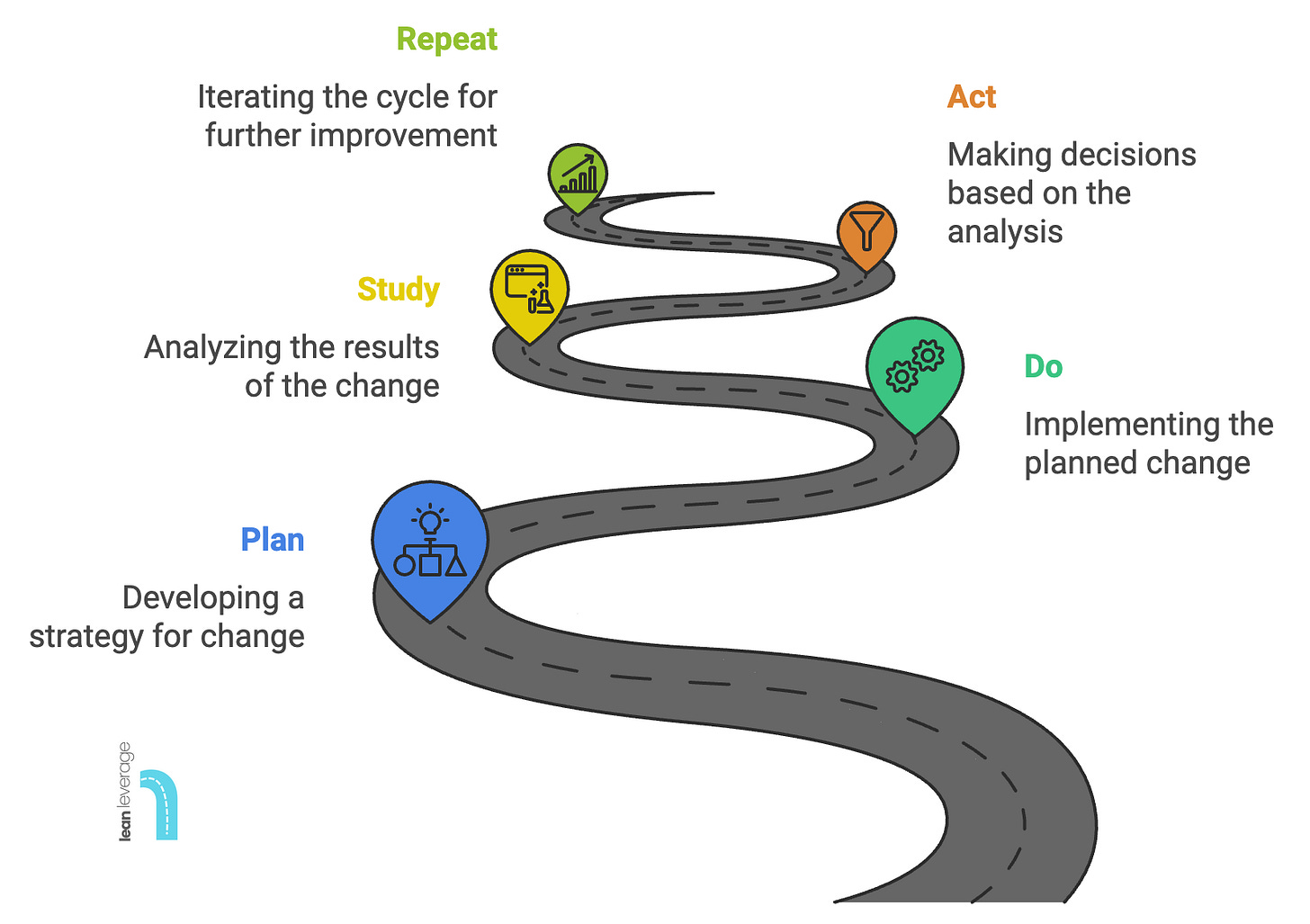Good day, my friend!
Let me share a little insight: some of us approach improvement projects like cooking a familiar dish—you plan, you cook, and then confidently serve it, skipping the crucial moment to pause and check. And then, bam! The dish is either salty enough to start a fish pond, swimming in oil, or bland like plain yam water. What went wrong? You skipped the Study phase—assuming everything was fine without taking a step back to assess what’s actually happening.
Now, my wife? She’s in a league of her own. When she’s cooking her famous egusi soup, she rarely tastes it while it’s on the fire. Yet, it turns out perfect 99% of the time. How? She has her own way of “studying” her soup. Maybe it’s the redness of the palm oil or the thickness of the broth—she instinctively knows what to adjust without needing a spoonful. Makes sense, though. With years of experience (and running a small food business back in Nigeria), she’s mastered her process so well that her adjustments are second nature.
Now me? Let’s just say I’m not so lucky. When I decide to make Naija fried rice, I convince myself I can wing it, no tasting, no adjustments —just vibes and Inshallah. Just vibes and Inshallah. And then, disaster. Too salty, too dry, or just…off. Why? I skip the Study phase. Turns out, whether you’re cooking or tackling process improvement, you can’t afford to neglect the basics of PDSA (Plan, Do, Study, Act). Even seasoned cooks (I like to think I’m one and I don’t care what you think) —or CI professionals—know the magic lies in studying and refining along the way.
Now, let’s talk about PDSA cycles—a fantastic tool for problem-solving and process improvement in both product and service-led organizations. It’s literally a perfect recipe for continuous improvement.
What is PDSA?
The PDSA cycle stands for Plan, Do, Study, Act, and it’s a straightforward yet powerful tool for testing and refining ideas to improve quality or implement change. Think of it as a compass—it keeps you on track, ensuring that you’re not just making changes but making the right ones. When used effectively, it drives continuous improvement and meaningful results.
Let’s break it down:
1. Plan
This is where you strategize. You define the problem, set objectives, and outline what needs to be done. Think of it as drawing a battle plan. If you’re selling boli (roasted plantain) and customers keep complaining it’s too dry, this is where you ask, “What’s the root cause of the dryness, and how do we fix it?”
2. Do
Now you execute the plan. Maybe you try roasting at a lower heat or adding a brush of oil. This phase is like testing your hypothesis—you implement the change.
3. Study
Here’s where things often go off the rails. People skip this step because they think the solution is perfect. But in reality, this is the step where you review what worked, what didn’t, and why. Did the oily boli fix the dryness issue, or are customers now complaining it’s too greasy? This is where you measure success against your baseline.
4. Act
Based on your study results, you either Adopt the change if it worked, Adapt it if it needs tweaking, or Abandon it if it didn’t work at all. The cycle doesn’t end here—you can launch a fresh cycle if needed.
The Problem: Stopping at Plan and Do
Here’s the issue: many people stop halfway. They plan, they do, and then pat themselves on the back as if the work is done. But no Study, no Act. It’s like running a race, reaching the halfway point, and deciding to stop because you feel like you’ve won. You haven’t!
Skipping the Study and Act phases leads to incomplete improvement cycles. It goes against the very essence of continuous improvement and leaves your process vulnerable to slipping back into inefficiency—or worse, becoming even more chaotic than when you started.
Daily Example
Imagine you’re trying to drink more water throughout the day (because hydration is key). You buy a fancy water bottle (Plan) and start carrying it everywhere (Do). But you don’t track how much water you’re actually drinking (Study). Turns out, the bottle is too bulky to carry around comfortably, so you often leave it behind when you go to work. Without studying and adjusting, you might think the problem is solved when you’re still as dehydrated as ever.
Risks of Not Completing the PDSA Cycle
Lack of measurable improvement: Without the Study phase, you have no idea if the change worked.
Reverting to old habits: The process can slide back into its original, inefficient state.
Worsened outcomes: The untested solution might create new problems.
How to Mitigate This?
Simple: Complete the PDSA Cycle!
The Study phase helps us assess outcomes against our baseline and decide whether to Adopt, Adapt, or Abandon the change. The Act phase ensures that whatever decision we make leads to sustained improvement—or another cycle to refine things further.
Remember, there’s no limit to the number of cycles you can do for one project but use wisdom. If the project is no longer delivering value, then it’s time to call it a day. Multiple cycles without progress are like repeating SS3 because you like wearing the school uniform.
Improvement is Never-Ending
PDSA reminds us that improvement is a continuous process. You’re never truly “done,” but each cycle gets you closer to excellence. Whether it’s perfecting your boli or streamlining patient flow in a hospital, don’t stop halfway—Plan, Do, Study, and Act your way to success.
Cheers to better processes and fewer half-baked solutions!
Tomiwa
Lean Process Improvement Enthusiast







